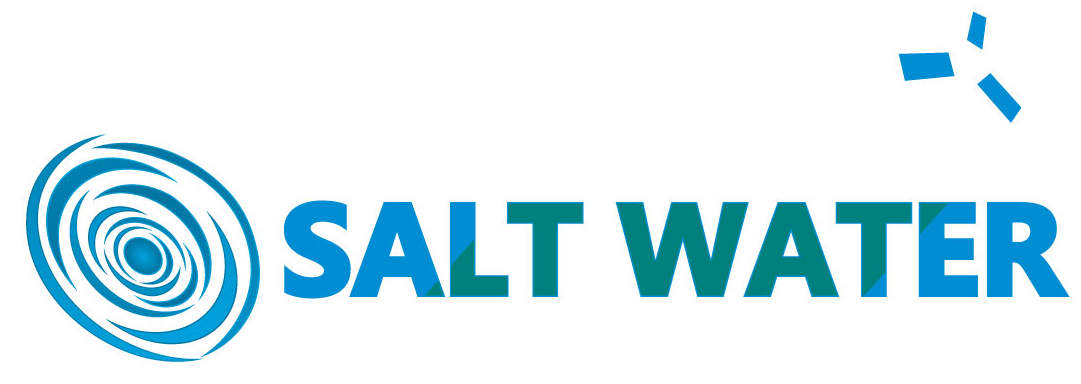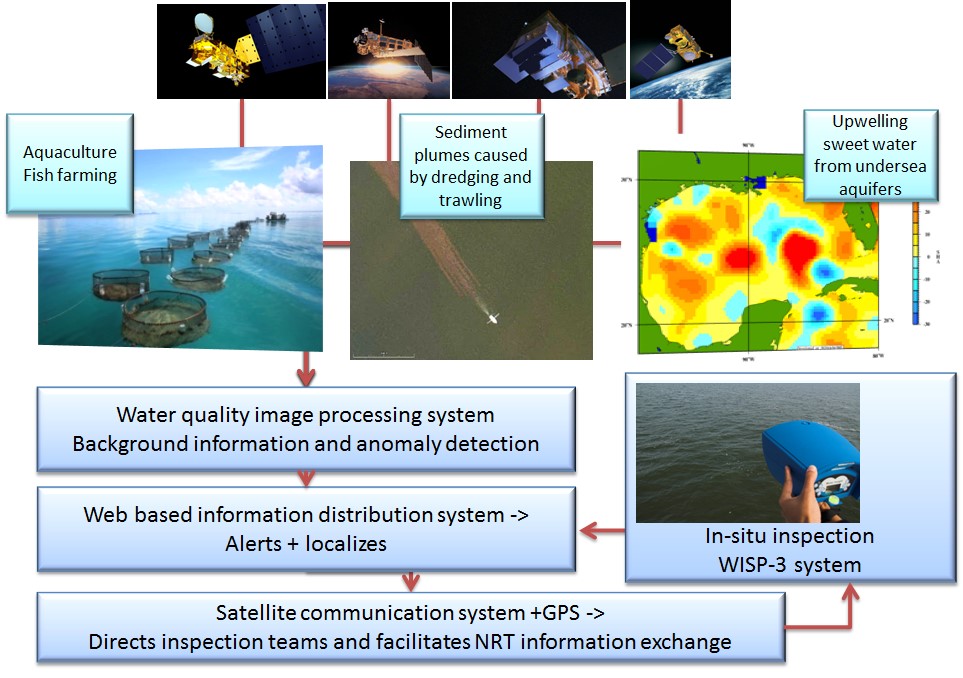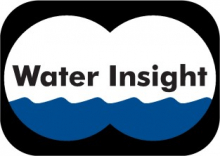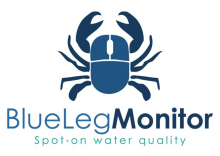
Objectives of the service
The objective of this Feasibility Study is the establishment of a sustainable service for improved monitoring and alerting of water quality anomalies for aquaculture.
The feasibility study aims at exploring the possibilities to offer relevant services to the market place for ecological surface water quality monitoring. The indicated services combine the data interpretation of satellite imaging and local in situ monitoring.
Users and their needs
The prime target users are aquaculture companies and aquaculture insurance companies
Aquaculture:
- Large aquaculture companies that are professionally managed and have a large information need from the perspective of risk management, and focus on the development of tools for better addressing critical situations in specific locations.
Insurance companies
- interested in obtaining objective information on the occurrence of certain water related plagues, their frequency, and intensity, from a risk perspective. Fisheries
- Local authorities
- Recreation and tourism industry
- divers
The current off-shore aquaculture industry is taking place in an open sea environment with which it interacts at several levels. The cages with fish present an environmental influence on the surrounding ecosystem (feed, medicine, fish excrements) as well is being influenced by this natural environment.
The user needs are improved monitoring capabilities in terms of resolution, time of delivery (NRT), synoptical but also detailed spot measurements, recognition of threatening amounts of biomass, its decay and its species composition. Delivery of the information to operations at sea using satcom connections. The users are involved in all levels of the project; defining user needs and requirements, , specification of the integral solution and pre-prototype, testing of the prototype services and providing feedback and recommendations (with a trace-back of the original user requirements). The users test the in-situ observation instrument to assess the usability in the Demonstration phase.
Service/ system concept
The intended integral solution is based on Earth observation of water quality using historical (ENVISAT), current (MODIS, VIIRS) and upcoming satellites (Sentinel 2 and 3). The Earth observation products are used to identify water quality anomalies at distances from user operations in a timely manner. The products are delivered to the user in near real-time to allow them to take measures based on perceived threats. To complement the service users have been instructed in the use of a handheld optical devices allowing them to inspect water quality locally and to determine more in detail the cause of the water quality anomaly. Earth observation satellite communication is the main space asset for this project, but also use is made of accurate GPS determinations to direct water sampling teams to places where a specific water quality anomaly has been detected.

Space Added Value
The intended to integral solution is based on Earth observation of water quality using historical (ENVISAT) and upcoming satellites (Sentinel). The Earth observation products is used to identify water quality anomalies at distances from user operations in a timely manner. The products are delivered to the user by means of satellite communication in near real-time to allow them to take measures based on perceived threats.
To complement the service users have been instructed in the use of a handheld optical device that allows them to inspect water quality locally and to determine more in detail the cause of the water quality anomaly.
Next to earth observation and satellite communication as space assets for this project, use is also made of accurate GPS determinations to direct inspection teams to places where a specific water quality anomaly has been detected.

Current Status
The project has started in July 2013, and investigated the user needs, user requirements and part of the viability analysis. A number of meetings have been organized to iterate the user needs and requirements.
The production and harmful algae season of 2014 in the West Coast of Canada was used to collect data and analyse in detail available information, as a basis for the development of the integrated service.
The consortium was invited to present its technology at the Aquaculture Insurance Conferences in Istanbul (2013) and Hong Kong (2014), and in 2014 published a paper on Aquaculture Risk Management in a World Bank publication (FARMD) together with representatives of the aquaculture insurance industry.
The Feasibility Study concluded with a Final Presentation on the 23rd of April 2015 where the presence of a representative of Marine Harvest Canada. A Demonstration Project is currently in preparation together with Marine Harvest to develop further the potential of the services analysed through the Feasibility Study
Prime Contractor(s)
Subcontractor(s)





